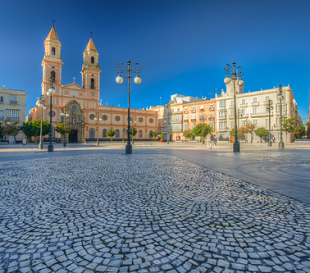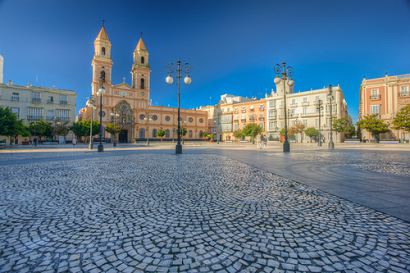
The history of the city of Cadiz – An unpretentious Spanish gem
Cadiz is one of the oldest continually inhabited cities in Europe. This beautiful city is built upon a narrow peninsula much of which is surrounded by sea. Its geographical location led to Cadiz becoming an important sea port and a leading naval base for at least 3000 years. Being such an significant city for so many years Cadiz upholds a rich, exciting and interesting past.
From the 16th to the 19th century, the British attacked, blockaded and looted Cadiz on five occasions. This included Drake’s attack, which was known as the “singeing the King of Spain’s beard”, due to the war ships that were set alight at the port by Drake and his naval force.
The second largest Roman theatre in the world is in Cadiz yet unbelievably had gone undiscovered since being built upon during medieval times. In 1980 warehouses that had been built on the medieval site were knocked down, which led to the 2000-year-old theatre being rediscovered.
There are many buildings and landmarks that stand out in this historical city. The Plaza de Mina is a breath-taking square, which houses the Museum of Cadiz and many marvellous old gothic houses where the city’s educated and affluent once lived.
The Plaza de Catedral is the home of the cathedral and the Baroque Church of Santiago, both of which are high on the list of top tourist destinations in Spain. Plaza San Antonio is perhaps the most beautiful square in Cadiz, once again having a splendid church and surrounded by imposing gothic houses.
The heavily populated old town is filled with a network of narrow, quaint but impractical streets leading from one plaza to the next. Asides it stunning architecture and intriguing history Cadiz and its surroundings are blessed with many beautiful beaches. Perhaps the best-loved of all Cadiz’s beaches is the Playa de Caleta, which lies in between two castles – San Sebastian and Santa Catalina.
This glorious beach is strongly reminiscent of Havana in Cuba. Its natural beauty and Havana resonance is likely to have been the reason why a scene from the James Bond film ‘Die Another Day’ was filmed here.
Despite its beauty and astounding history much of Cadiz’s appeal stems from it unpretentiousness, a welcoming trait of many Spanish cities. The city’s modesty is epitomised by its electricity pylons, which look like they come straight out of the Hollywood blockbuster ‘War of the Worlds’. The cables need to be big because they carry the electricity across the bay of Cadiz – A fascinating city for sure.



